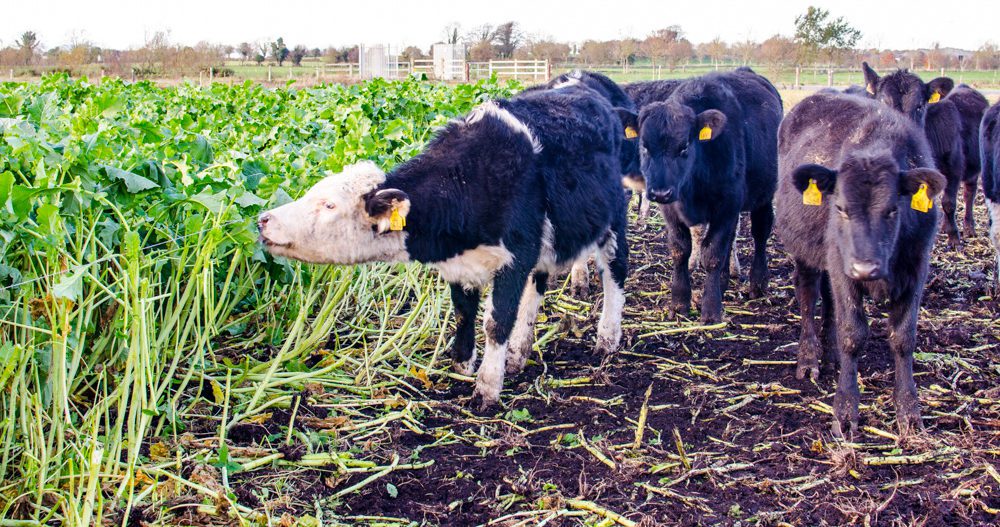Forage brassicas are a cost effective winter feed and have been sown by many livestock and tillage farmers this year to increase feed availability and – therefore – helping stretch existing silage stocks and reducing the requirement for bought-in feeds.
However, Germinal’s Dermot Campion points out that forage brassicas require specific grazing management to ensure high utilisation and animal performance; this may be a new departure for many farmers who are embracing the benefits these crops offer.
“Initially, stock should be given one-to-two hours access, building up to full-time access over seven-to-10 days and – to avoid digestive disorders – animals should not be introduced to fresh brassicas when hungry, as they could gorge themselves,” Dermot explained.
“Roughage in the form of a grass, hay or straw should be freely available to animals being transitioned onto brassica diets, as when fully adjusted, brassicas should make up no more than 70% of the diet, with 30% coming from a good fibre source.”
Brassicas have a poor mineral profile and are found to be deficient for selenium, iodine, copper and cobalt, so it is essential that animals are supplemented with such minerals – generally in the form of a bolus.
According to Dermot: “Utilisation levels of up to 80% can be achieved from brassicas which have a high leaf-to-stem ratio.”
Dermot has observed that the most popular crop grown this year is Redstart, a hybrid between rape and kale, because of its rapid establishment, short growing period and high yield potential.
“Under optimum conditions, a target of 80% and 75% (or less) utilisation from Redstart is sufficient for maintenance and weight gain, respectively,” he said.
To maximise crop utilisation and feed budgeting, the correct crop allocation must be given and the dry matter (DM) yield of the crop must be calculated.
- 0.5m x 0.5m (0.25m2) quadrat;
- A seed bag;
- A garden shears;
- Scales.
Continuing, Dermot said: “Using the quadrat, a number of representative samples should be taken to get an accurate estimation of yield.
“All material within the quadrat should be harvested to a residual height of 10cm; all harvested material should be placed in the seed bag and weighed on a scales.
“To calculate total DM yield per hectare, you must multiply the fresh weight per m2 by 40,000 and then multiply by the expected DM percentage; brassicas have very low DM – typically around 12%,” he explained.
- Total DM yield (kg/ha) = Fresh weight (kg) x 40,000 x DM%
- Total DM yield (kg/ha) = 1 (kg) x 40,000 x 0.12 = 4,800 kg DM/ha
Dermot also outlined how typically out-wintered animals have a daily DM intake requirement of 3% of liveweight.
For example, a 300kg animal will require 9kg of DM/day. However, only 70% of this can be made up of brassica, leaving the brassica requirement at 6.3kg of DM/day; the outstanding 2.7kg of DM being made up of silage, hay or straw.
“A crop of late sown Redstart – with an average yield of 4,800kg of DM/ha – will last a group of 30, 300kg weanlings for 25 days, receiving an approximate area of 0.04m²/day,” Dermot added.
- Strip grazing – use long and narrow strips to maximise utilisation and minimise trampling;
- Using a double fence for safety and for labour efficiency when allocating strips;
- Back fencing can be done to minimise poaching on grazed areas;
- Ensure animals have access to roughage and fresh water;
- Move stock during the day to allow frozen crops to defrost before offering fresh allocations. If the crop remains frozen, alternative forage will have to be offered to animals not given access to a fresh break;
- All brassica crops should be consumed by mid-February as they can mature and flower, producing toxins which can affect animal health.


